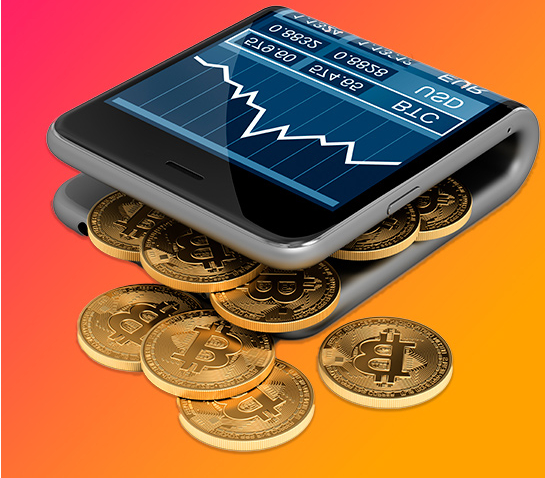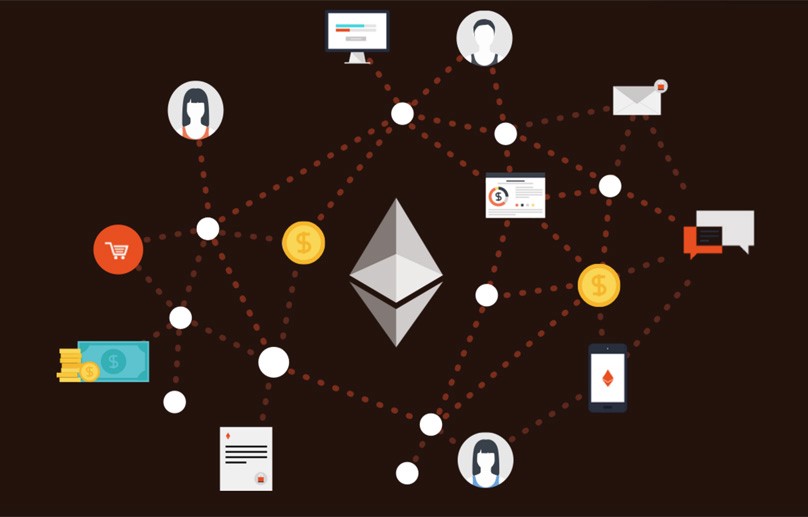
A crypto wallet is not the same as a traditional wallet. You could definitely go for your wallet right now, open it, and either take out tangible money or put some back in—or at the very least a payment card. A wallet does not secure your money in any manner, except from the elements or becoming misplaced in your luggage.
A crypto wallet is a different beast entirely. A crypto wallet is a software or physical device that allows users to store and manage their Bitcoin, Ether, and other cryptocurrencies.
When you wish to acquire cryptocurrency, whether through a exchange or as a gift or revenue, you direct the sender to a unique cryptographic address generated by the wallet.
You can imagine your cryptocurrency saved on the wallet in the same way that files are stored on a USB drive, but the information stored on the wallet just refers to the location of your cash on the blockchain, the public ledger that records and authenticates all cryptocurrency transactions.
A crypto wallet is a way to manage, secure, and use cryptocurrencies
Origin
Satoshi Nakamoto created the first cryptocurrency wallet when he released the bitcoin protocol in 2009.
How does a Crypto wallet work?
Blockchain is a public ledger in which data is stored in “blocks.” These are records of all transactions, as well as the amounts stored at each location. Cryptocurrencies are not kept “in” a wallet in the traditional sense. The crypto assets reside on a blockchain, and the wallet software enables you to interact with the blockchain balances. The wallet itself stores addresses and lets their owners to transfer to other addresses while also allowing others to see the balance stored at any particular address.
A crypto wallet works by using two keys: one public and other private. The keys can be used to track ownership, receive, or spend cryptocurrencies. A public key allows others to make payments to the address derived from it, whereas a private key enables the spending of cryptocurrency from that address.
Public Key
Those who wish to send you cryptocurrencies will use your public key as your wallet address. This address is a combination of numbers and letters that ranges in length from 26 to 35 characters. This address is frequently shown as a QR code that can be readily scanned by a camera device to make it more useable.
Sharing your public key with others is secure since it can only be used to contribute funds to your crypto wallet and cannot be used to withdraw cash or see what is within your wallet.
Sharing your public key with others is secure
Private Key
Your private key functions more like a PIN or verification number, confirming your ownership of the cryptocurrency and allowing you to spend it. Your private key, as the name implies, should be kept private and only known to you.
Private key is actually a very lengthy string of digits. Most crypto wallets will share your private key with you as a seed phrase to make it easier for users to utilize.
A seed phrase is an organized series of 12 to 24 syllables that represents a random number. It is important to preserve your seed phrase printed on a piece of paper exactly as shown when you set up your crypto wallet.
Never ever share this information with others
Because your crypto wallet just holds your public and private keys, it may be better to think of it as a keychain. Your cryptocurrency is stored on the blockchain, a digital record, and is encrypted with the information from your wallet proving you are the owner.
It may sound hard, but most crypto wallets come with applications with surprisingly simple interfaces that allow you to keep track of your holdings with live price charts and even trade crypto directly from the app.
While each wallet has its own specific nuances, here are the general steps involved in sending or receiving funds using a crypto wallet:
- Receive funds: You need to retrieve an address (also known as a public key) from your wallet. Locate the “generate address” feature in your wallet, click it, then copy the alphanumeric address or QR code and share it with the person who wants to send you crypto.
- Send funds: You need the address of the receiving wallet. Locate the “send” feature in your wallet and enter an address of the wallet you intend to send coins to. Select the amount of crypto you’d like to send and click “confirm.” Consider sending a small test transaction before sending large amounts of crypto. Note that sending coins requires a fee that will be paid to miners in exchange for processing the transaction.
Types of crypto wallets
It’s also worth noting that crypto wallets come in two varieties: hot and cold wallets.
- A hot wallet is one that is linked to the internet and operates as a program on your computer or mobile device. Because of their user-friendly design, accessibility, and functionality, hot wallets are widely regarded as the ideal alternative for individuals just getting started with cryptocurrency.-
- A cold wallet, on the other hand, is one that is not online and takes the shape of a tiny physical device that allows you to control your private keys and verify transactions before they are executed. Cold wallets are thought to be more safe, and as a result, they are better suited for large sums of money or long-term storage.
Hardware wallets
Hardware wallets are physical devices that use USB to connect to your computer.
As previously stated, these wallets are also known as cold wallets. You may transfer funds from them while they are linked to your computer, but once they are unplugged, your funds are fully protected.
But what if you misplace your hardware wallet?
A decent hardware wallet has a “seed,” which lets you to restore your wallet on any new device. Remember that the wallet does not contain your cryptocurrency; it only has the keys to the addresses where your money is stored.
Hardware wallets are an excellent choice for crypto traders who want full control over their crypto assets and value the security features that they offer.
Software wallets
Software wallets are classified as hot wallets since they are internet-connected and are available as apps or applications on your mobile devices or desktops.
Some of these wallets are cross-platform compatible, allowing users to manage their crypto assets no matter where they are.
As a result, they are a fantastic alternative for newcomers or people who value easy access to their digital funds.
Mobile wallets
Mobile wallets are hot wallets that may be accessed via a downloading app on your mobile device. Some mobile wallets also have a desktop companion software that allows you to synchronize your portfolio and manage your assets across different devices.
Mobile wallets are frequently seen as the greatest option for those who are new to the world of cryptocurrencies. They’re loaded with features that make managing your assets simple, and they have user-friendly interfaces.
The majority of mobile wallets will save your private key for you. While this is helpful (since you don’t have to worry about losing or accidently revealing it), it implies that the wallet (rather than you) controls your private keys.
Paper wallets
Cryptocurrency does not have to be entirely digital; once you have your address and private key, you can print it out — this is known as a “paper wallet”.
This is another type of cold storage because it is not connected to the internet.
Pros of Crypto Wallets:
- Ownership of one’s own money: If you have your own private keys, the crypto belongs to you and you alone. Money in a bank, on the other hand, is theoretically the bank’s property.
- Flexibility to send transactions whenever and to whoever you choose: Decentralized cryptocurrencies are resistant to censorship since no one controls the network, making it difficult for anyone to halt transactions.
Cons of Crypto Wallets:
- User responsibility: When you start your own bank, you accept full responsibility for everything that goes wrong.
- Learning curve: Using a crypto wallet necessitates a minimum amount of technical skills as well as being acquainted with a new type of financial environment.
The Takeaway
Setting up a crypto wallet is a necessary step in order to transfer, receive, and store cryptocurrency. These digital wallets store the key pairs that provide you access to the blockchain, which is where your crypto and crypto transactions are stored. To accomplish anything with your crypto, you need the keys, much like a car.
Fortunately, there are several solutions available these days, including wallets that are connected to the internet or the cloud (hot wallets) as well as physical devices known as cold wallets. Most hot and cold wallets are multi-asset wallets, meaning they may hold a variety of various forms of cryptocurrency.

